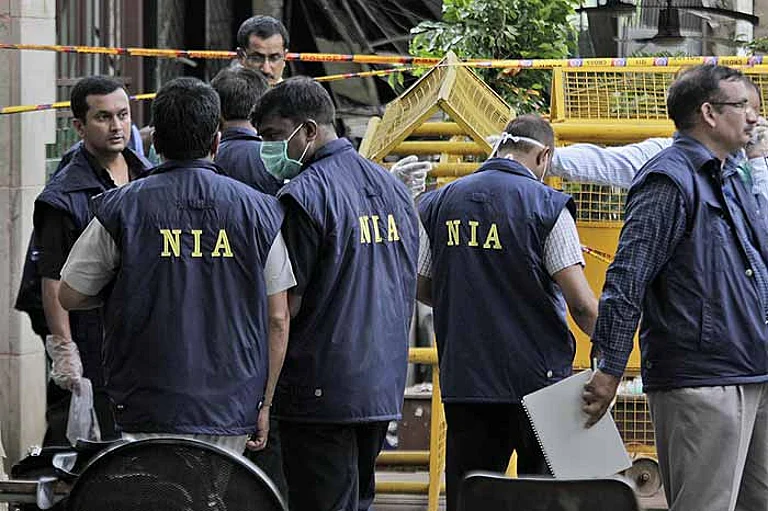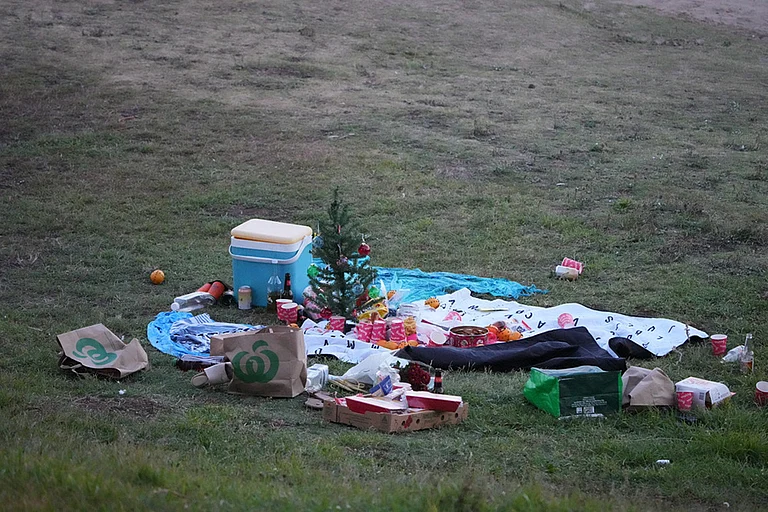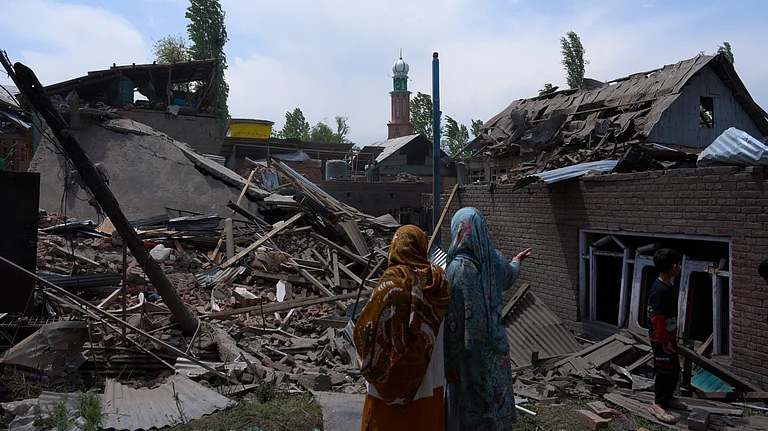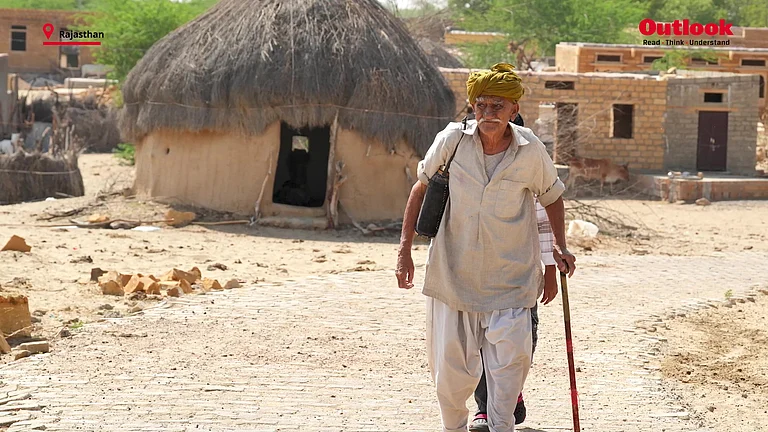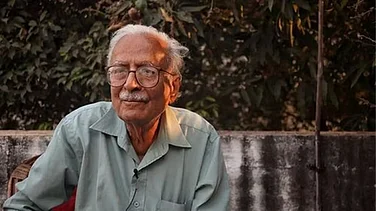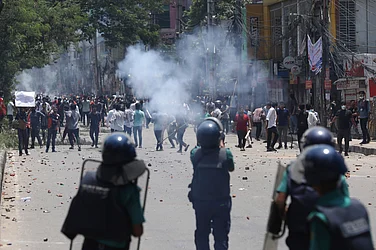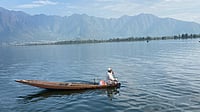Nearly three months after the Pahalgam attack on April 22, 2025, that brought India and Pakistan on the brink of war, critical counter-terrorism lessons have emerged―lessons that extend beyond the immediate context and hold relevance for other conflict-prone regions. Since both sides have already reiterated their respective positions, there is little utility in restating the familiar narratives.
Instead, the focus must now shift to how these lessons are internalised and applied. The manner in which they are absorbed will shape not only the trajectory of peace between India and Pakistan, but also influence the stability of one of the world’s most populous and volatile regions.
One of the prime aspects of India’s counter terrorism narrative was that there was a clear Pakistani hand in the Pahalgam attack. Initially, within a few days of the attacks, the official narrative emerging from Srinagar was that the four terrorists responsible for the carnage have been identified―two local terrorists from Kashmir, two from Pakistan―all part of the Resistance Force, a shadowy proxy for the Lashkar-e-Taiba (LeT) that was also responsible for the Mumbai 26/11 attacks. As per this version one of them―Aadil Thoker was caught on CCTV footage crossing over into Pakistan via the Wagah border.
According to officials he then returned to the Kashmir Valley as an infiltrator across the Line of Control (LoC). The houses of Kashmiri terrorists, namely Asif Sheikh at Tral, Pulwama district, and Adil Thoker in Bijbehara, Anantnag, were razed to the ground using explosives.
Perhaps the most glaring gap in the official narrative was the failure to adequately assess or even acknowledge the account of the local eyewitness who first came in contact with the attackers. This eyewitness was among the first civilians to interact with the terrorists after they entered the area. First-hand accounts of the Baisaran attack point to the involvement of non-Kashmiri-speaking militants who appeared unfamiliar with the social fabric of Jammu and Kashmir.
Eyewitness testimonies suggest that the assailants who engaged with victims and locals were outsiders. For instance, a pony operator, fluent in Kashmiri and dressed in a traditional pheran, recounted on television how one of the attackers asked him about his religious identity. Such a question betrays a fundamental unfamiliarity with the region. A native Kashmiri or even someone from the broader ethno-cultural landscape would rarely need to ask such a question. In the close-knit communities around Baisaran, linguistic, cultural, and visual cues make such identities readily apparent. Most pony operators in the area are either Kashmiri or Gujjar Muslims.
This seemingly minor detail was, in fact, critical in determining the attackers’ origins. These granular sociolinguistic markers should have been highlighted early in the investigation. The trajectory of evidence collection and the framing of official claims should have reflected such cultural nuance, particularly when engaging with international interlocutors. In such settings, credibility hinges on forensic data, contextually grounded, culturally informed assessments.
After nearly two months of what appeared to be a rigorous and professional investigation, the National Investigation Agency (NIA) confirmed that all three Pahalgam attackers were Pakistani nationals. This finding contradicted the earlier official claims that local individuals were among the perpetrators. In connection with the attack, the NIA arrested two men―Parvaiz Ahmad Jothar from Batkote and Bashir Ahmad Jothar of Hill Park―both areas located in Pahalgam near Baisaran, the site of the attack.
According to the agency, the two had knowingly harboured the attackers in a seasonal dhok (hut) at Hill Park prior to the incident. The attackers were affiliated with the proscribed terrorist group LeT. The NIA revealed that Parvaiz and Bashir had provided the terrorists with food, shelter, and logistical support. On the day of the attack, the terrorists from Pakistan allegedly selected their victims based on religious identity, making it, in the agency’s words, “one of the most gruesome terrorist attacks ever.”
In retrospect, it would have been wiser for a professional agency like the NIA to conclude its investigation before any public statements were made. The findings could have then served as authoritative evidence in briefings with international interlocutors. Instead, the narrative presented by the All-Party delegation in 31 countries reinforced the claim that two of the attackers were Pakistani nationals and two were locals―a position later contradicted by the NIA’s findings.
Some political leaders who were members of the delegation, notably former Minister Shashi Tharoor, made emphatic assertions that, while well-intentioned, lacked a nuanced understanding of counter-terrorism dynamics. Tharoor also cited intelligence inputs as credible evidence of Pakistan’s involvement. However, such declarations would have carried greater weight if they were grounded in a completed investigation by the NIA. Also, the intelligence inputs are for the benefit of the political executive and national security, and it cannot be cited as a proof before the international community.
The contradiction between the initial statements and the NIA findings led to considerable confusion domestically and skepticism abroad. For international interlocutors, especially those engaged in monitoring South Asia, this episode added to the perception that India’s counter-terrorism narrative often jumps the gun, prioritising political messaging over investigative integrity. A more measured and evidence-based approach, as the facts indicated by the NIA, would have strengthened India's credibility on the global stage.
The information provided by the NIA has significant implications for the broader counter-terrorism strategy in Jammu and Kashmir. Baisaran lies close to the Pir Panjal, a thickly forested range that provides natural cover for militants and facilitates undetected movement along both sides. Policing every inch of this rugged terrain, which stretches from the LoC deep into the hinterland, is virtually impossible. In this context, collaboration with mountain communities, who possess intimate knowledge of local routes and shortcuts, has been vital.
Their partnership with the armed forces was instrumental in disrupting LeT’s network in the region and their movement to the Kashmir Valley. For a period, these routes were transformed from militant corridors into zones of resilience. However, trust is a perishable commodity. To sustain and strengthen local partnerships, a bottom-up counter-terrorism strategy must return to fundamentals―foremost among them, enhancing human intelligence. In the Pir Panjal’s challenging terrain, this remains the most potent weapon.
A more grounded and sustainable counter-terrorism approach must take into account the broader political, ethnic and linguistic realities of Jammu and Kashmir. It requires a careful reading of trendlines and a willingness to adopt corrective measures based on the understanding that security is not solely about policing―it is equally about trust, inclusion, and sustained engagement.
Baisaran, the site of the attack, lies at least 220 km from the LoC. For international interlocutors, it was difficult to comprehend how Pakistan-based elements could execute such a strike deep within J&K’s hinterland with such ease. Yet the infrastructure of cross-border terrorism, training camps, launch pads, and logistical support networks, continues to operate with tacit, and sometimes overt, backing from official Pakistani agencies. The strategic deployment of non-state actors has long been central to Rawalpindi’s asymmetric warfare doctrine. Despite international scrutiny, this machinery remains largely functional.
A more credible and pragmatic explanation would have been to acknowledge that militancy or terrorism remains an enduring challenge in the former state. Instead of clinging to the narrative of “normalcy”, there is a need to confront the evolving nature of the threat. While there has indeed been a decline in violence compared to the 2000s, meaningful analysis should be based on more recent baselines, not distant historical peaks.
The governing establishment must move beyond the politically expedient claim that the abrogation of Article 370 has delivered a decisive improvement in the region’s security situation. This assertion risks fostering dangerous complacency and undercuts the decades of effort, coordination, and sacrifice that have shaped J&K’s existing security architecture. The attack took place in an open meadow facing the Pir Panjal mountain range. For over 20 minutes, the terrorists operated freely killing multiple civilians without any security personnel present in the area. In a region where every large public congregation typically receives perimeter protection, this lapse is deeply alarming.
Ground reports in the weeks leading up to the attack indicated a clear uptick in infiltration attempts, particularly along the Samba-Kathua corridor in the south and the Rajouri-Poonch-Baramulla axis that runs along the International Border and LoC. The failure to translate this intelligence into a preventive operational posture on the ground reflects a serious breakdown in strategic response.
These regions, by virtue of their complex topography and socio-cultural continuities with Pakistani Punjab and Pakistan-occupied Jammu and Kashmir, offer militants easier ingress routes and greater opportunities for concealment. Yet these critical geographic and social nuances were conspicuously absent from the statements issued by the All-Party delegation. Notably, the delegation included no elected representatives from Jammu and Kashmir, save for a single nominated Rajya Sabha MP, highlighting a serious representational gap at a time when local insights were essential.
Looking ahead, as tourism begins to return to Jammu and Kashmir, a troubling pattern has emerged in the political discourse: the repeated invocation of tourist footfall figures as evidence of "normalcy”. This trend marks a sharp departure from the earlier, more measured consensus among successive governments, regardless of party affiliation, that rising tourist numbers should not be equated with lasting peace. That earlier restraint was wise and grounded in a clear understanding of the region's volatility.
Tourism, while economically crucial, is acutely sensitive to perceptions of security. It tends to spike during temporary lulls in violence and drops sharply after major incidents. As such, it is an unreliable indicator of long-term stability.
Using it as a strategic barometer can lead to false assurances and delayed or inadequate responses from the security establishment. In recent years, however, institutional caution has been abandoned. Official briefings and political statements increasingly tout higher tourist inflows as a signal of the “restoration of normalcy”.
This framing reduces a complex matrix, comprising security, governance, and community sentiment, into a simplistic, feel-good statistic. That is not just misleading; it is dangerous. It fosters complacency within the security apparatus and stifles critical assessments from field officers and local administrators. Moreover, such claims are easily undermined by terrorist attacks, as tourists remain soft and visible targets. When security narratives are built on fragile premises, it creates a vulnerability not just for visitors, but for the broader credibility of the state’s counter-terrorism posture.
The lessons from the Pahalgam attack underscore the urgent need for India to recalibrate its counter-terrorism strategy through a deliberate, patient, and contextually informed framework. In much of the Global South, dominant narratives are often shaped by inherited colonial constructs that continue to marginalise grassroots perspectives even when those voices hold the key to understanding and resolving local conflict. The disconnect between New Delhi and the ground realities of the former state remains as stark today as it was over 50 years ago.
The polity has to demonstrate the sensitivity or institutional will to absorb and genuinely respect grassroots perspectives. The real task is not to reiterate official positions, but to internalise the difficult truths such tragedies expose. A truly grounded approach must prioritise granular intelligence, rebuild trust-based local networks in vulnerable regions such as the Pir Panjal on both sides, and create space for stakeholders within the former state to shape policy―rather than imposing top-down assumptions.
In a terrain as complex as Jammu and Kashmir, counter-terrorism efforts must be driven by humility, analytical rigor, and inclusive dialogue. Only then can India respond credibly to evolving threats and speak with legitimacy on the international stage. Sustainable peace cannot be built through optics or rhetorical posturing. It requires a deeper respect for the realities on the ground and a willingness to listen to the communities most affected.
The most authentic lens and the most strategic one is that which emerges from the lived experiences of the people. Centering those truths is not just ethically necessary; it is the only way to make a compelling, fact-based case about cross-border terrorism before the responsible entities of the international community. In the end, it is from the ground that both the contours of peace and the shape of credible global advocacy can arise.
(The author has worked for 25 years as a practitioner, researcher and analyst on conflict areas and violent extremism issues. He has authored two books, including Across the LoC: Inside Pakistan-administered Jammu and Kashmir published by Columbia University Press)
(Views expressed are personal)








